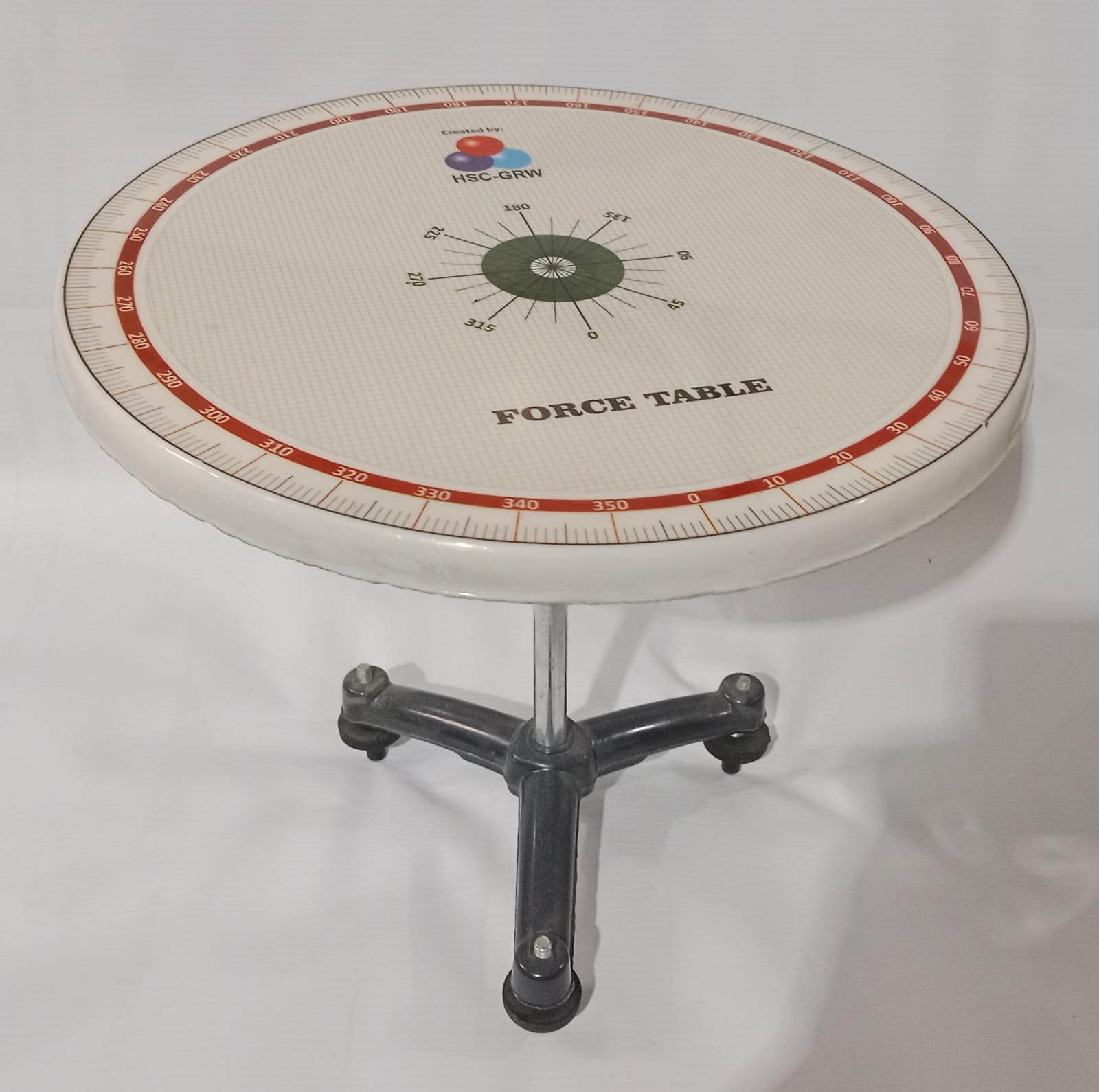Description
A Force Table is an Apparatus Used in Physics Labs
In physics education, a force table is an apparatus used frequently to illustrate fundamental concepts such as equilibrium and vector addition. In many laboratories, this tool has become indispensable, enabling students to engage in hands-on learning.
What Is a Force Table?
A force table consists of a circular platform marked with a 360-degree scale, pulleys, standardized weights, a central ring, and strings. The platform allows for precise angle measurements, while the pulleys can be adjusted around its edge. By attaching weights to the strings and directing them through the pulleys, force vectors can be visualized and manipulated.
Educational Applications
First and foremost, force tables are used to demonstrate vector addition. Students can see firsthand how individual forces combine to produce a resultant force. Additionally, these tables are employed to illustrate the concept of equilibrium. By adjusting the weights and angles, students can achieve a state where the forces balance perfectly, leaving the central ring stationary.
Moreover, force tables help in resolving forces into their components. This process allows students to understand how a single force can be broken down into its horizontal and vertical components, further reinforcing theoretical knowledge with practical experience. Therefore, experimental validation is made possible, as theoretical calculations can be verified through hands-on experimentation.
How to Use a Force Table
To begin, the table is placed on a level surface. Next, the pulleys are attached at desired angles around the platform’s edge. Weights are then hung using strings over the pulleys, applying force vectors to the central ring. Subsequently, angles and weights are adjusted until the central ring achieves equilibrium. Finally, data regarding the angles and weights are recorded for further analysis.
Benefits of Using a Force Table
Firstly, interactive learning is promoted by force tables. Students gain a more profound understanding of concepts through direct engagement with the apparatus. Additionally, abstract concepts like vector addition and equilibrium become easier to grasp when visualized. Furthermore, critical thinking and problem-solving skills are developed as students experiment with various setups to achieve equilibrium. As a result, learning becomes more engaging and enjoyable, leading to better retention of knowledge.
Conclusion
In summary, a force table is an apparatus used extensively in physics labs, providing an interactive and visual method for exploring the principles of forces and equilibrium. Its integration into the curriculum enhances the learning experience, making complex topics more accessible and intriguing for students. Thus, the use of force tables in educational settings is highly beneficial, contributing significantly to the understanding of fundamental physics concepts.







Reviews
There are no reviews yet.